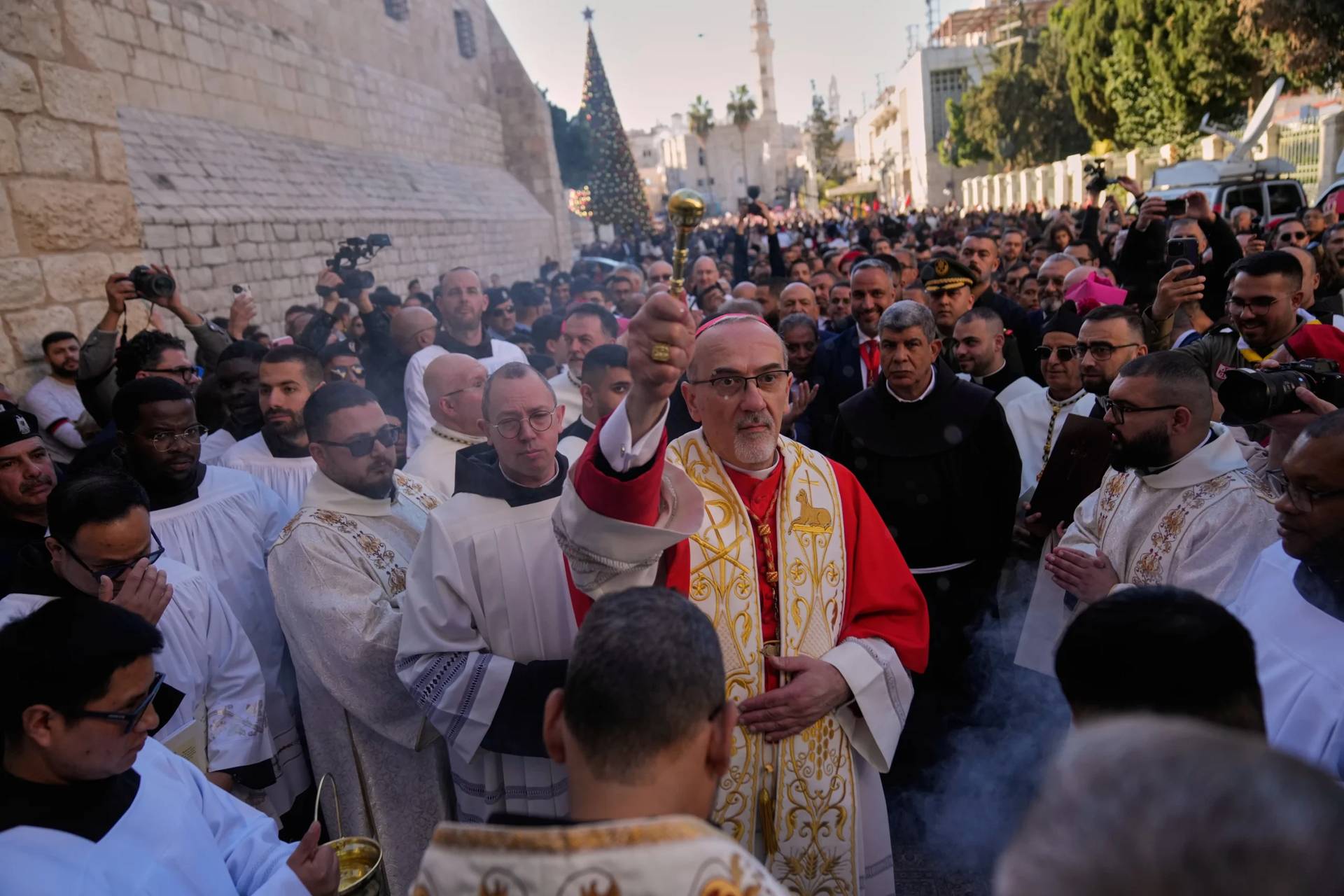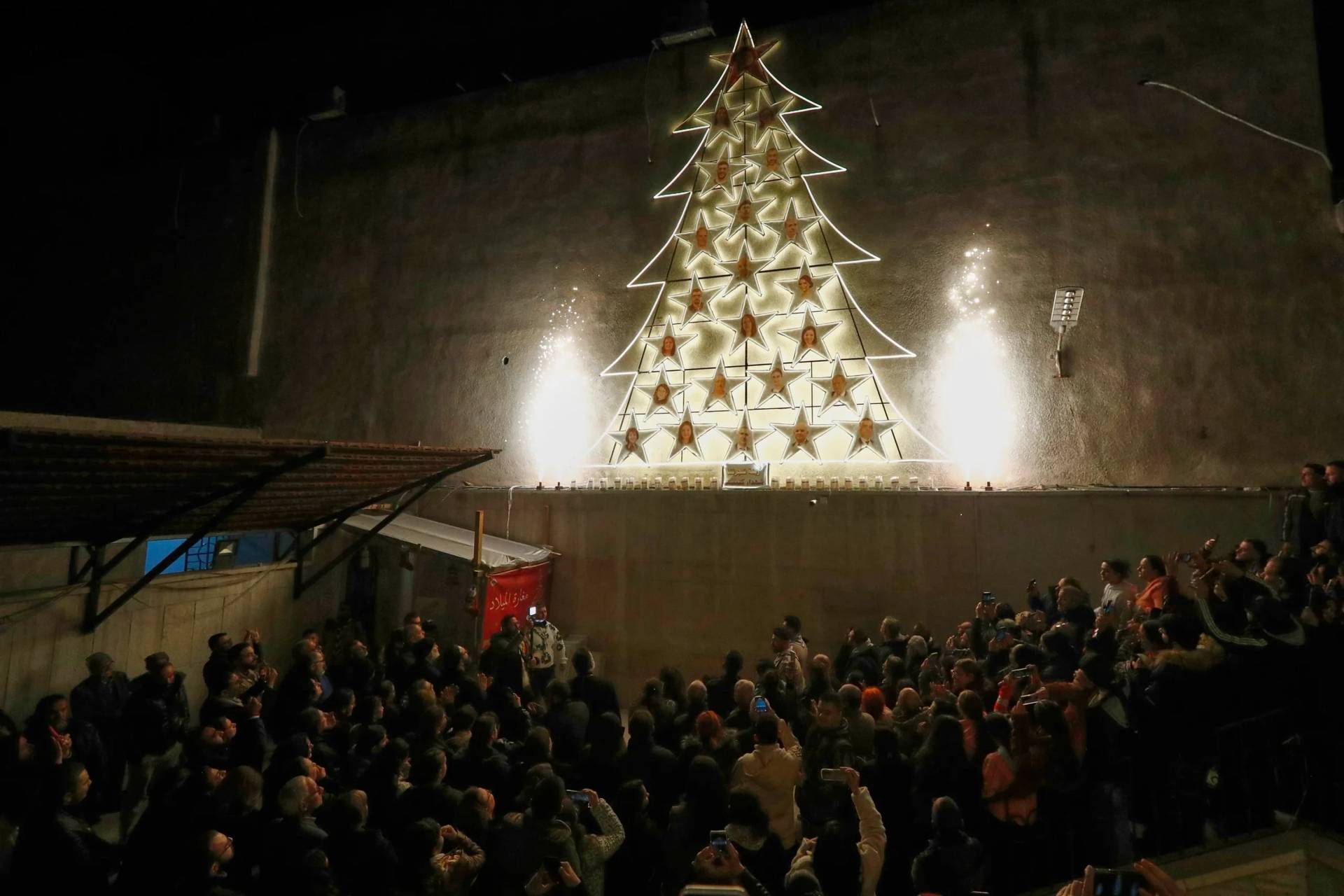BELFAST, Northern Ireland — King Charles III has pledged to follow in the footsteps of his late mother, Queen Elizabeth II, and work for peace in Northern Ireland.
Speaking Tuesday to Northern Ireland’s political leaders, including those from nationalist parties who want Northern Ireland to leave the United Kingdom and become part of the Republic of Ireland, the new monarch said he would draw on his mother’s “shining example” and seek the welfare of everyone in Northern Ireland.
Charles flew to Northern Ireland on Tuesday on the latest leg of his tour of the four parts of the United Kingdom, where a cheering crowd gathered to greet him in a region with a contested British and Irish identity that is deeply divided over the British monarchy.
In the latest outpouring of affection since Queen Elizabeth II’s death last Thursday, hundreds of people lined the street leading to Hillsborough Castle, the royal family’s official residence in Northern Ireland, just outside Belfast. The area in front of the gates to the castle was carpeted with hundreds of floral tributes.
Charles and his wife Camilla, the Queen Consort, got out of their car to greet villagers — waving to the cheering crowd and sometimes using both hands at once to shake the mass of outstretched hands from people including schoolchildren in bright blue uniforms.
Charles even petted a corgi — famously his late mother’s favorite breed of dog — held up by one person, and some in the crowd chanted “God save the king!”
“Today means so much to me and my family, just to be present in my home village with my children to witness the arrival of the new king is a truly historic moment for us all,” said Hillsborough resident Robin Campbell, as he waited for the new monarch.
“Although it is also a day tinged with great sadness as we witness a loving son coming to our village while we are all in mourning for the loss of a truly magnificent queen and his loving mother,” he added.
While there was a warm welcome in Hillsborough, the British monarchy draws mixed emotions in Northern Ireland, where there are two main communities: mostly Protestant unionists who consider themselves British and largely Roman Catholic nationalists who see themselves as Irish.

That split fueled three decades of violence known as “the Troubles” involving paramilitary groups on both sides and U.K. security forces, in which 3,600 people died. The royal family was touched personally by the violence: Lord Louis Mountbatten, a cousin of the queen and a much-loved mentor to Charles, was killed by an Irish Republican Army bomb in 1979.
A deep sectarian divide remains, a quarter century after Northern Ireland’s 1998 peace agreement.
For some Irish nationalists, the British monarch represents an oppressive foreign power. But others acknowledge the queen’s role in forging peace. On a visit to Northern Ireland in 2012, she shook hands with Sinn Fein deputy leader Martin McGuinness, a former IRA commander – a once-unthinkable moment of reconciliation.
On Falls Road in Belfast, a stronghold of nationalists, several walls are decorated with murals of Bobby Sands, an iconic IRA member who died while on a hunger strike in prison in 1981, and others killed in the Troubles.
“No, he’s not our king. Bobby Sands was our king here,” said 52-year-old Bobby Jones. “Queen never done nothing for us. Never did. None of the royals do.”
But in a sign of how far Northern Ireland has come on the road to peace, representatives of Sinn Fein — the main Irish nationalist party, linked during the Troubles to the IRA — were scheduled to attend commemorative events for the queen and meeting the king on Tuesday.
The Irish nationalist Speaker of the Northern Ireland Assembly praised the queen’s role in the peace process, in a message of condolence to the king.
Alex Maskey — a member of Sinn Fein, the party once linked to the IRA — said the example of the queen had helped “break down barriers and encourage reconciliation” in Northern Ireland.
He spoke at an event attended by leaders from all the main political parties in Northern Ireland.
Charles responded that his mother “felt deeply, I know, the significance of the role she herself played in bringing together those whom history had separated, and in extending a hand to make possible the healing of long-held hurts.”
The president and prime minister of the neighboring Republic of Ireland are also due to attend a memorial service in Belfast, despite tense relations between Dublin and London over Brexit. Since Britain left the European Union in 2020, the U.K. and the EU have been wrangling over trade rules for Northern Ireland, the only part of the U.K. that shares a border with a member of the bloc.
On Monday night, Charles and his siblings, Anne, Andrew and Edward, their heads bowed, briefly stood vigil around their mother’s flag-draped coffin in St. Giles’ Cathedral as members of the public filed past.
The following morning, a man wearing a suit adorned with medals stood silently, bowed his head and moved on. A woman dabbed away tears with a handkerchief. Another woman with two young children in their school uniforms walked slowly past the coffin.
In the line of mourners outside St. Giles’ Cathedral in the historic heart of Edinburgh, Sheila McLeay called the queen “a wonderful ambassador for our country.”
“She was such an example for every single one of us. She was dignified. She was just, she was beautiful inside and out. And I have known her all of my life. And I miss her very much,” she added.
Jill Lawless and Mike Corder reported from London.














